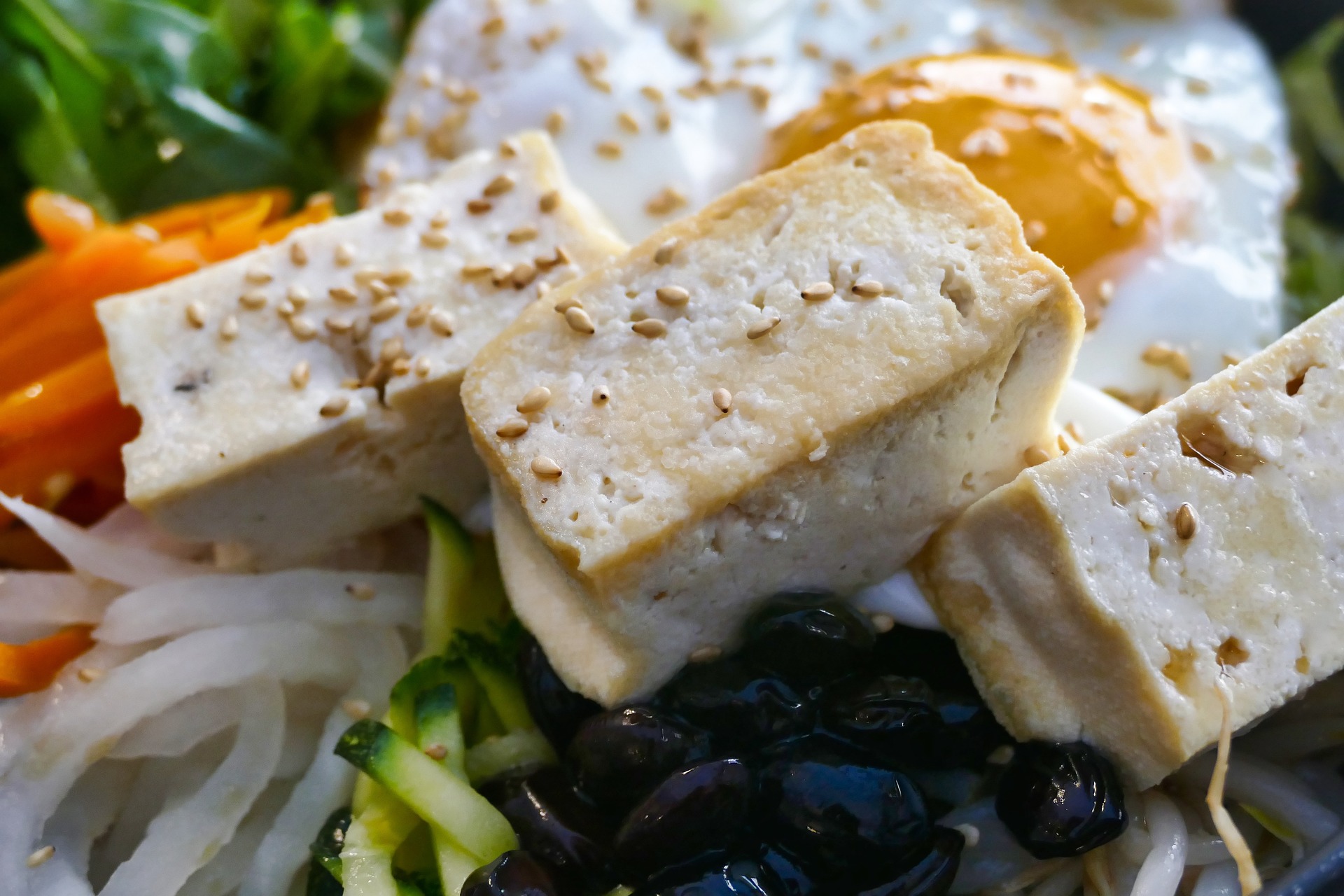Tofu: Its Origins, Nutritional Benefits, and Culinary Versatility
Tofu is highly renowned for its nutritional benefits
2/8/2024

Unraveling the History and Origins of TofuTofu, also known as bean curd, is a versatile and nutritious staple in many cuisines around the world. Its origins can be traced back over two millennia to ancient China, where it is believed to have been discovered by accident during the Han dynasty (206 BCE–220 CE). Legend has it that a Chinese cook accidentally curdled soy milk when adding nigari seaweed (rich in magnesium chloride) as a coagulant. This accidental discovery led to the creation of tofu, a protein-rich food that would become a cornerstone of Asian cuisine.
The process of making tofu involves curdling soy milk and pressing the resulting curds into blocks. Over time, tofu spread beyond China, becoming popular in various East Asian countries such as Japan, Korea, and Vietnam. Each culture has its own unique methods of preparing and consuming tofu, resulting in a wide range of textures and flavors.
Exploring the Nutritional Benefits of Tofu
Tofu is renowned for its nutritional benefits, making it a popular choice for vegetarians, vegans, and health-conscious individuals. It is a complete protein, meaning it contains all nine essential amino acids that the human body cannot produce on its own. This makes tofu an excellent source of protein for those following plant-based diets.
In addition to protein, tofu is rich in essential nutrients such as iron, calcium, magnesium, and phosphorus. It is also low in calories and contains no cholesterol, making it a heart-healthy food choice. Tofu is a versatile ingredient that can be incorporated into a wide variety of dishes, from stir-fries and soups to salads and smoothies.
Debunking Myths: The Possible Detriments of Tofu in the Diet
Despite its numerous health benefits, tofu has been the subject of some controversy, particularly regarding its potential negative effects on hormone levels and thyroid function. Some studies have suggested that the isoflavones found in soy products like tofu may mimic estrogen in the body, leading to concerns about hormonal imbalance, particularly in women.
However, the majority of research indicates that moderate consumption of tofu is safe for most people and may even offer health benefits, such as reducing the risk of certain cancers and improving cholesterol levels. Furthermore, many of the concerns surrounding tofu are based on outdated or misinterpreted studies, and current evidence suggests that it can be a healthy addition to a balanced diet.
Understanding the Difference Between Soft and Hard Tofu
Tofu comes in various textures, ranging from soft and silky to firm and dense. The main difference between soft and hard tofu lies in the amount of water content and the level of firmness. Soft tofu, also known as silken tofu, has a high water content and a delicate, custard-like texture. It is often used in dishes such as soups, smoothies, and desserts.
Hard tofu, on the other hand, has been pressed to remove excess water, resulting in a firmer texture that holds its shape well when cooked. Also known as firm or extra-firm tofu, this type of tofu is ideal for stir-fries, grilling, and baking, as it maintains its texture and absorbs flavors effectively.
Crafting Quality Tofu: Key Ingredients and Techniques
The quality of tofu largely depends on the ingredients and techniques used in its production. While traditional tofu is made using just two ingredients—soybeans and a coagulant such as nigari or gypsum—modern tofu production may include additional ingredients such as stabilizers and flavor enhancers.
However, for those seeking the highest quality tofu, opting for simple, organic varieties with minimal additives is recommended. The best tofu is made from non-GMO soybeans and uses natural coagulants like nigari or gypsum, resulting in a clean, pure flavor and superior texture.
Tofu is a versatile and nutritious food with a rich history and cultural significance. Despite some concerns, tofu can be a valuable addition to a healthy diet, providing a plant-based source of protein and essential nutrients. By understanding its origins, benefits, and culinary uses, individuals can fully appreciate the diversity and versatility of this beloved ingredient.






